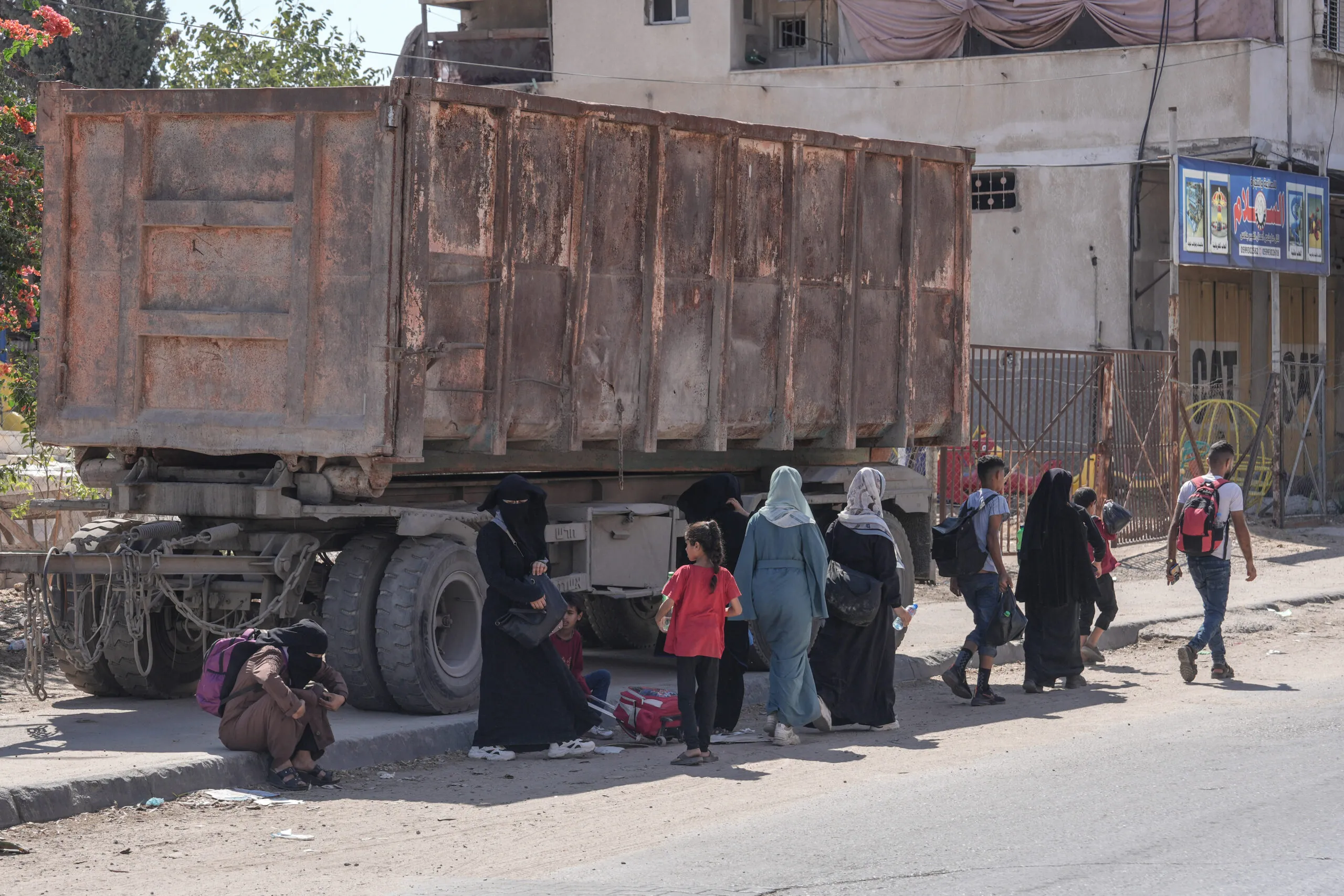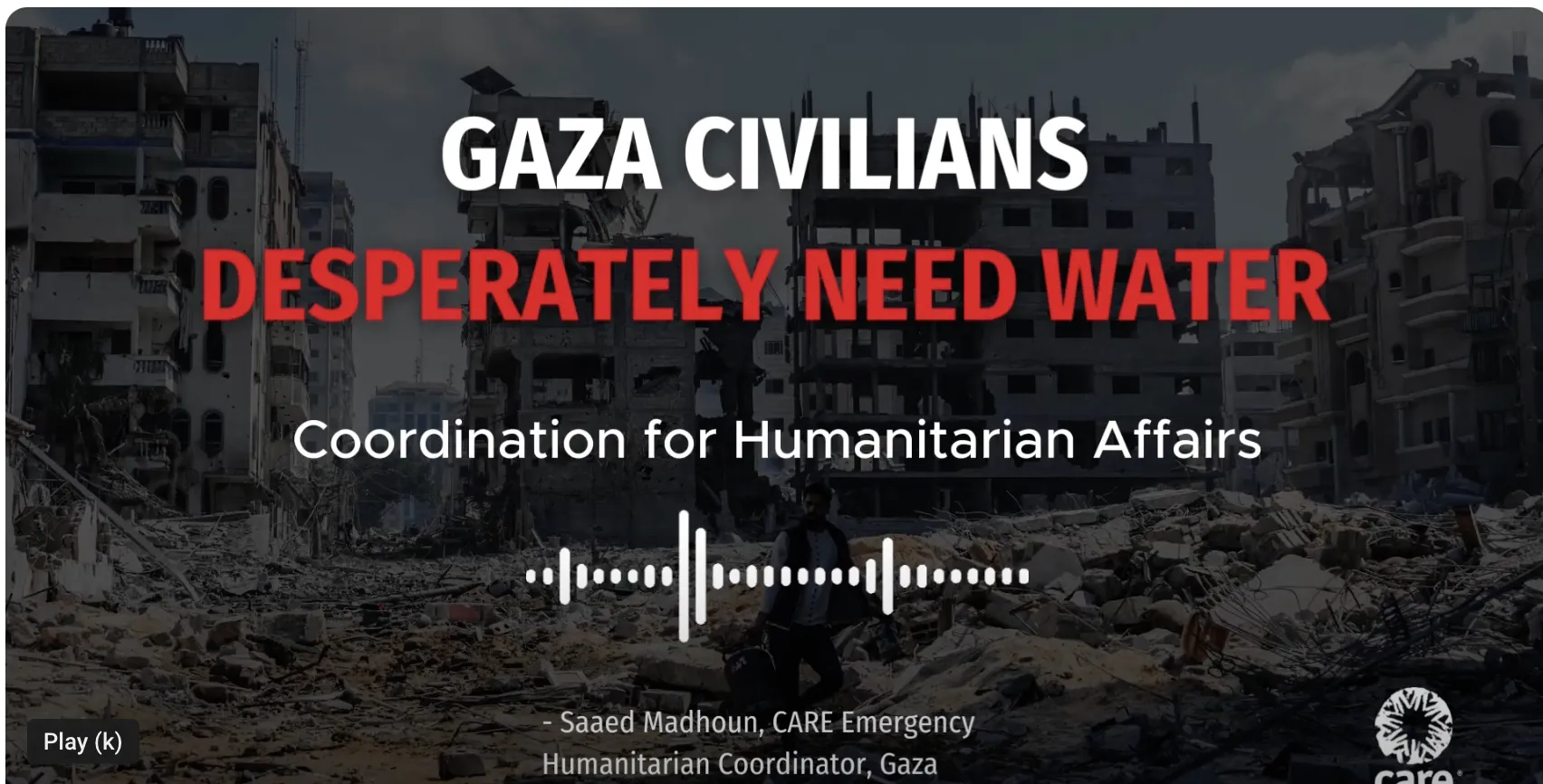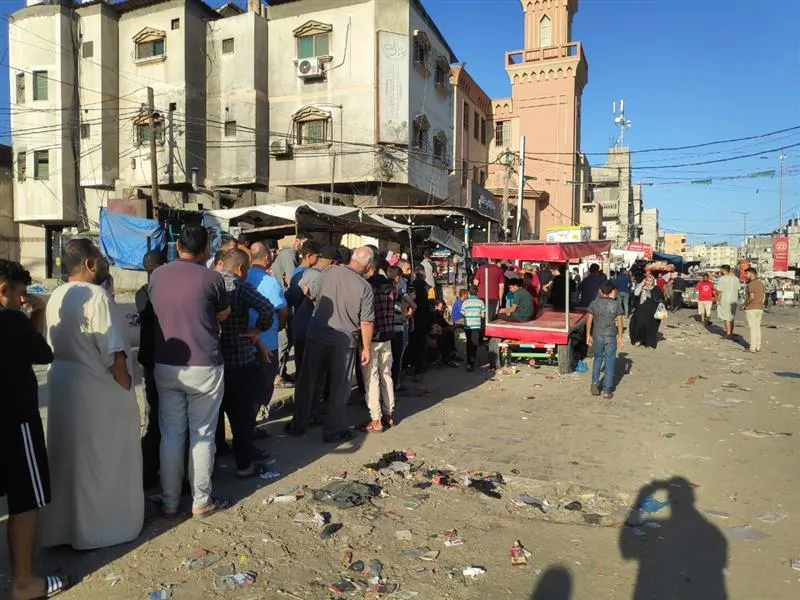Working despite the trauma
This essential aid work is going on while humanitarian workers’ own lives are disrupted and thrown into uncertainty by the conflict.
“This morning I spoke to my colleagues in Khan Younis, like I do every morning,” Hiba said. “It’s an increasingly painful conversation.
“They can’t sleep at night due to the incessant airstrikes. The daughter of one of my colleagues has stopped talking. Completely stopped. I am so worried about the children of Gaza, many of whom have now lost their families. I keep thinking: who will take care of them? How will they process all this trauma?”
The United Nations estimates that there are nearly 1.4 million internally displaced people (IDPs) in Gaza, with nearly 580,000 sheltering in 150 UNRWA-designated emergency shelters (DES).
Overcrowding is a growing concern, as the average number of IDPs per shelter has reached more than 2.5 times their designated capacity.
“My colleagues have had to flee their homes in northern Gaza ten days ago and struggle like everyone else around them with overcrowded shelters, very little water, hours-long queues for a loaf of bread, no electricity,” Hiba said.
‘Survival is now a wonderful surprise’
According to the United Nations office of humanitarian affairs, nearly 1,400 Israelis and foreign nationals have been killed in Israel since the escalation of violence began on Oct. 7, and at least 212 people are currently held captive in Gaza. The subsequent bombardment of Gaza has killed over 5,000 people, with children and women accounting for 62% of casualties, and over 1,000 are missing or presumed dead, while 15,000 have been injured.
CARE’s decades of work in conflict zones has shown over and over that women, the elderly, and the disabled are inordinately impacted in times like these. But the trauma that children face is incalculable.
“My colleagues are hoping their children won’t need hospital care as hospital generators are just hours away from running out of the last drop of fuel,” Hiba said.




